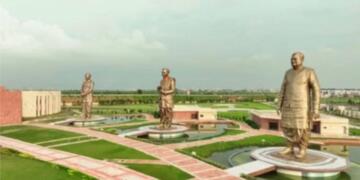India is the third largest producer of steel in the world, and still imports high-end steel from other countries. This is a typical problem with developing countries, that despite having good amount of natural resources they import the finished products from developed countries because they do not have industries and skilled labor to produce the finished product. In the time of the British Raj in India, the country used to produce fine quality cotton but it used to import clothes from Britain because the garment manufacturing industries were in Britain. Therefore, a developed country sells us the finished product produced from our raw materials and earns lot of profit while the producer of raw materials remains poor. Previous governments did not make concrete efforts to encourage Make in India by which imports of finished product could have been minimized.
Since the Modi government came to power, India started incentivizing high-end steel producers which has resulted in the reduction of imports by 36 per cent to 7.48 million tonnes in 2017-18 compared from 11.7 mt in 2015-16. “India has been able to save ₹5,000 crore worth of foreign exchange through domestic substitution of high-end steel over imports” said Union Steel Minister Chaundhary Birendra Singh. High-end steel has applications in shipping, defense, medical equipment and infrastructure sectors. To produce high-end steel for automobile manufacturers, Steel Authority of India (SAIL) has tied up with Arcelor Mittal which will help the automobile manufacturers to buy the steel in the country rather than importing it.
India brought a National steel policy in 2017 which will override the previous national steel policy which was implemented way back in 2005. According to the new national steel policy, India is projected to have a capacity of 300 mt by 2030-31 with a production of 255 mt, with finished steel per capita consumption of around 160 kg during the same period. The per capita steel consumption in our country is around 68 kg, which is substantially lower than the world average of around 208 kgs. India is also one of the largest exporters of steel. Steel exports from the country were expected to face slowdown amid rising protectionism around the world. Recently, United States imposed tariffs over steel imports, but according to the ministry that will not harm steel production in the country because US accounts for only 3.3 percent of India’s total exports.
Steel is one of the core industries for India as well as for any other country. Eight Core Industries in India are Electricity, steel, refinery products, crude oil, coal, cement, natural gas and fertilizers. If the core industries grow at a good rate then they provide a support base for other industries to grow fast. Steel and iron are basic requirements for industrial growth of any country. It is a blessing for us that our country has one of the largest iron ore and steel reserves in the world. India is the largest producer of sponge iron and third largest producer of steel in the world. India has a vast population of semi skilled and unskilled workers who could be employed only in agricultural sector or low end manufacturing sector. Therefore, it is most feasible for India to expand its manufacturing sector, and the large iron and steel deposits could help the country in this mission.































